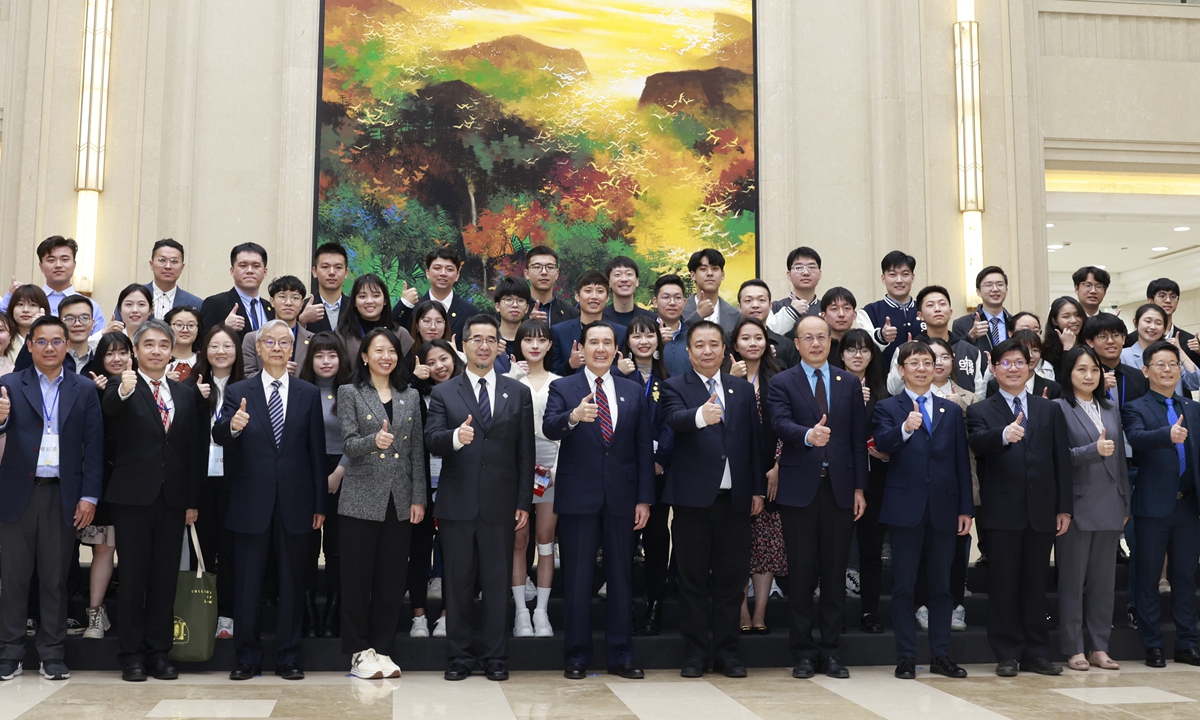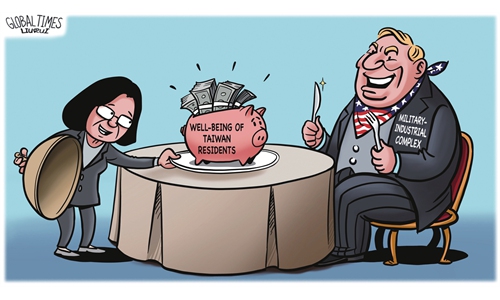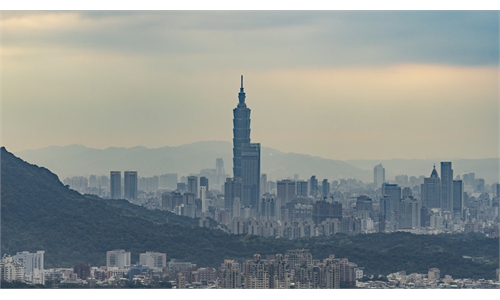What I saw during my 12-day trip to the mainland was very different from what I have heard in Taiwan

On April 6, 2023, Ma Ying-jeou takes a group photo with teachers and students from the island of Taiwan and Fudan University in Shanghai. Ma, who was visiting the mainland, led Taiwan students to Fudan University in Shanghai. Photo: VCG
I feel very fortunate to have visited the Chinese mainland with Mr. Ma Ying-jeou. This is my third visit to the mainland and also the longest one so far, spanning 12 days and across five cities. My previous two visits were only brief stops in Fuzhou and Xiamen [in East China's Fujian Province], but this time, I had the opportunity to visit different cities and was deeply touched by the experience.First, I was impressed by the energy resources of the mainland. In addition to the economy, energy is closely related to people's livelihoods. Even before arriving at the Shanghai Pudong International Airport, I could see many wind turbines from the plane. On the way from the airport to Hongqiao Railway Station [in Shanghai], I also saw a nuclear power plant. I never expected a nuclear power plant to be so close to me. In Chongqing, I learned that the hydropower generated by the Three Gorges Dam can supply several provinces. These experiences made me think deeply. The mainland is so large, and the proportion of new energy used is quite high. However, it does not abandon nuclear power. By contrast, in Taiwan, the stagnation of nuclear power in recent years has planted worrying seeds for our future energy security.
Second, the preservation of China's history surprised me. During the 12-day visit, we visited many relics related to the history of the War of Resistance against Japanese Aggression (1931-45) and the constant flow of historical information was overwhelming and difficult to digest at times. However, one thing is certain: The Chinese mainland is not like what I had heard when I was young, where it was claimed that "many historical relics are lost." At the commemorative sites, we felt how the predecessors made great contributions and sacrifices for the Chinese nation. The inscriptions on the stone tablets at the sites recorded the life stories of national heroes, and people can leave messages to pay tribute to them on the spot. Of course, with the vastness of the mainland and its rich cultural heritage, the historical relics we saw this time may only be a small part. Some historical relics may have disappeared, perhaps due to urban development, and historical buildings may have been relocated. But this is not the end; instead, the relocated historical buildings are integrated with the local landscape and re-planned, allowing tourists to feel the corresponding atmosphere. The Yellow Crane Tower in Wuhan is a memorable example of this.
Third, the integration of ethnic groups and the development of a comprehensive Chinese culture. All the instruments involved in the chimes performance and the Shanghai Chinese Orchestra's repertoire were traditional Chinese instruments. The performance we watched in Shanghai included not only traditional instruments but also various ethnic minority instruments, such as the dongbula of the Kazak people and matouqin of the Mongol people. Some of the instruments I had never heard before. It was amazing that traditional Chinese instruments could play such a majestic piece, which made me think of the magnificent road that leads to the far, the wide sea that takes in numerous rivers, the ancient country of the East and a feeling of universal brotherhood.
Finally, what also attracted me was the advancement of smart technology. As a doctoral student in the Department of Electrical Engineering, I am particularly interested in the application of smart cities, and the development of the mainland in this area is far beyond my imagination and perception. I did not expect to see the application of smart technology in all aspects of urban governance, ranging from the joint governance of metropolitan areas to the services and livelihood management in neighborhoods. These smart technologies are truly applied in their everyday life. I think it is related to the original intention of devoting to applying smart technologies to improving people's livelihoods from the beginning, which is a real practice of serving the people. In addition, I also noticed many smart factories, whether from the initial production of components to the logistics and storage of components, or from the assembly of finished products to the final delivery of logistics, with robots being used throughout the links.
Previously, what I had heard about the mainland was that it was a place where information was blocked and facilities were outdated. During this visit, I found that the real situation was different from what I had heard in Taiwan. This made me ponder how much of the information I know about the mainland on a daily basis is not its current situation. In recent years, cross-Straits civil exchanges have fallen to a freezing point, and the understanding of youth on both sides of the Taiwan Straits has been affected. However, this exchange trip not only allows young Taiwan students to understand that the mainland is different from what we usually hear, but also offers an opportunity for bilateral exchanges among the youngsters. With more communication and friendship between each other, misunderstandings can be reduced and the connection of cross-Straits youth friendship will be consolidated.
The author is a doctoral student in the Department of Electrical Engineering of a Taiwan-based university. opinion@globaltimes.com.cn


